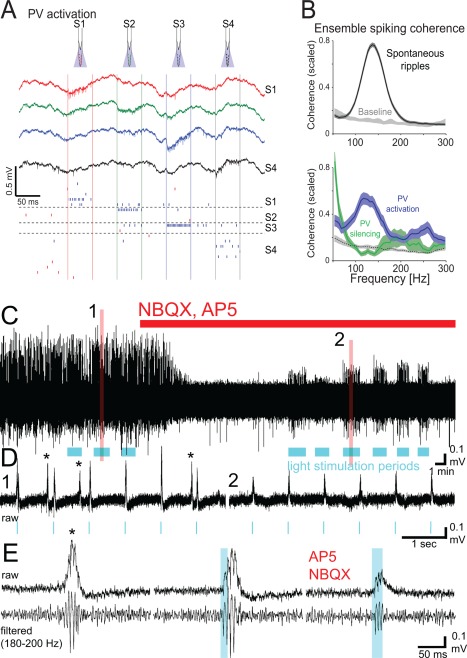Figure 27.

Tonically driven PV interneurons induce coherent spiking at ripple frequency and can pace ensemble spiking. (A) Optogenetic activation of PV interneurons in a behaving PV::ChR2 mouse. Wide‐band traces recorded at 200 µm intervals during sequential illumination (square pulses) of the CA1 pyramidal layer. Vertical colored lines delimit illumination on each shank, and horizontal dashed lines separate units recorded on distinct shanks (S1 to S4). Red/blue ticks indicate pyramidal and interneuron spike times, respectively. Each row corresponds to a single unit. Note locally induced interneuron spiking but no visible LFP ripples. (B) Ensemble spiking coherence. Coherence between aggregated pyramidal neurons recorded on different shanks. Cross‐shank spiking coherence was computed between agglomerated spike trains during spontaneous ripples (top, black trace), during PV activation (bottom, blue) or PV silencing (C, green). Note increased and decreased spike coherence during PV activation and inactivation, respectively. (C) Induced ripples by optogenetic driving of PV interneurons in vitro during blockade of ionotropic excitatory synaptic transmission (NBQX and AP5). Blue bars, light stimulation periods. (D) Zoomed traces from C. Asterisks, spontaneous ripples. A–B, reprinted with permission from Stark et al. (2014). D–E, reprinted with permission from Schlingloff et al. (2014).
